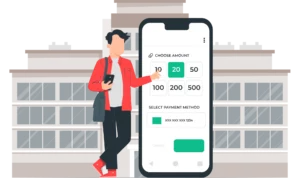Many vacation rental hosts, property owners, property managers, and revenue managers are wondering what 2023 holds for them. One way to stay booked and ahead of the competition is by conducting successful market research. PriceLabs’ Market Dashboard and Neighborhood Data provide valuable market & property pricing insights and a deep dive into your potential guests’ booking patterns. You can use this data to make informed decisions on where to invest your money and evaluate the effectiveness of past investments. You can also use this information to support strategies and enhance the performance of your properties.
Action points
- Reach out to your existing lead funnel: Retaining existing customers and leads, incentivizing referrals, reaching out to prospects and implementing targeted ads can effectively generate leads and maintain a loyal customer base for your property as a property owner.
- Update your listing: To attract guests during the low season on vacation rental websites, update your listing, optimize it with key features and amenities, and establish a brand presence with photos and captions.
- Adjust vacation rental policies for low seasons: To appeal to guests’ unique needs during low season, offer flexible policies and personalized offers such as free or nominal-fee cancellations and multiple cancellation policies while considering the bottom line and risks involved in accepting or turning down requests.
- Track OTA ranking: To increase the visibility of your listing on OTAs like Airbnb, Vrbo, and booking.com, track your ranking by considering various factors such as amenities, cancellation policy, and listing description, and craft it for your ideal guest to reflect their interests.
- Invest in vacation rental marketing: Consistently market your vacation rental property through social media, paid ads, collaborations, automated emails, and exclusive promotions.
- Alter your Dynamic Pricing strategy with PriceLabs: PriceLabs offers data-driven pricing solutions that will enable you to stay ahead of the competition. For example, the PriceLabs Dynamic Pricing feature automatically adjusts prices based on occupancy, demand, and seasonality.
Be prepared for all kinds of seasons, guests, and booking patterns. As a host, you must be ready to tackle all sorts of situations with your vacation rental armoury. Is there a demand downturn? Should you start panicking and altering your vacation rental pricing strategies? Well, most markets in the USA are facing a decline in revenue. At the same time, Orlando had a 28% increase in revenue in Jan 2023 compared to Jan 2022.
Let’s look at how some markets in the US are performing by comparing their Jan 2022 Revenue to Jan 2023:
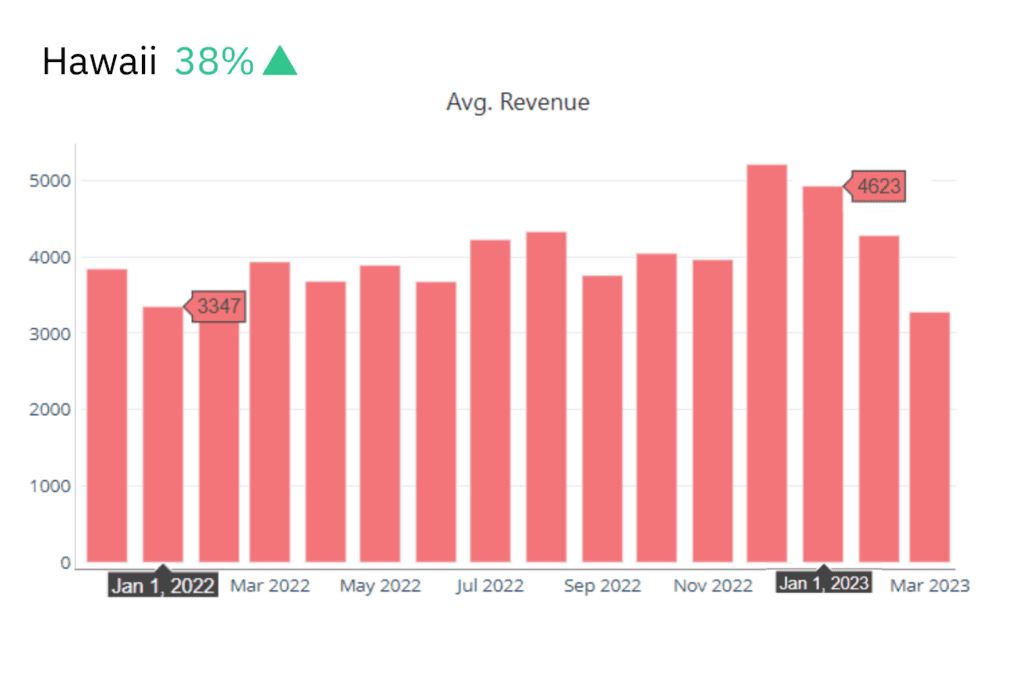

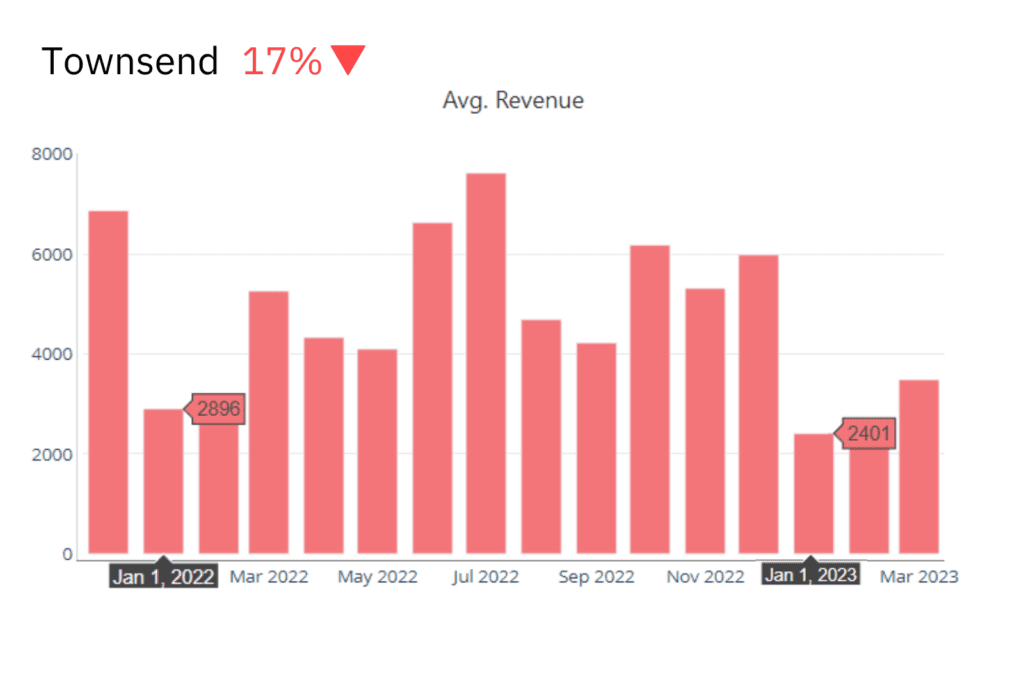

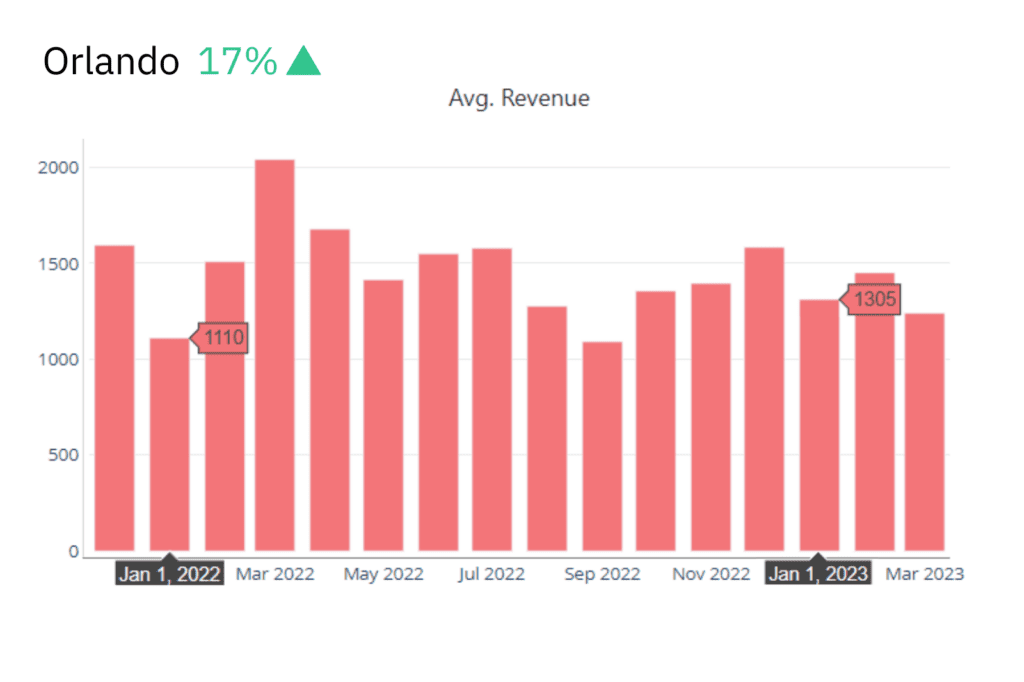



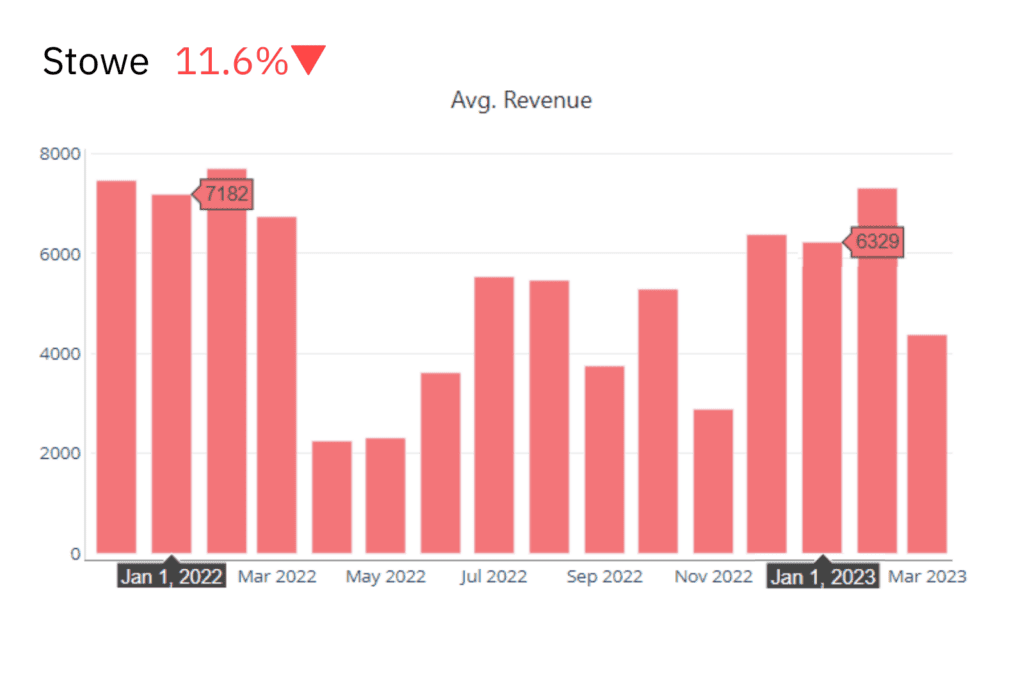

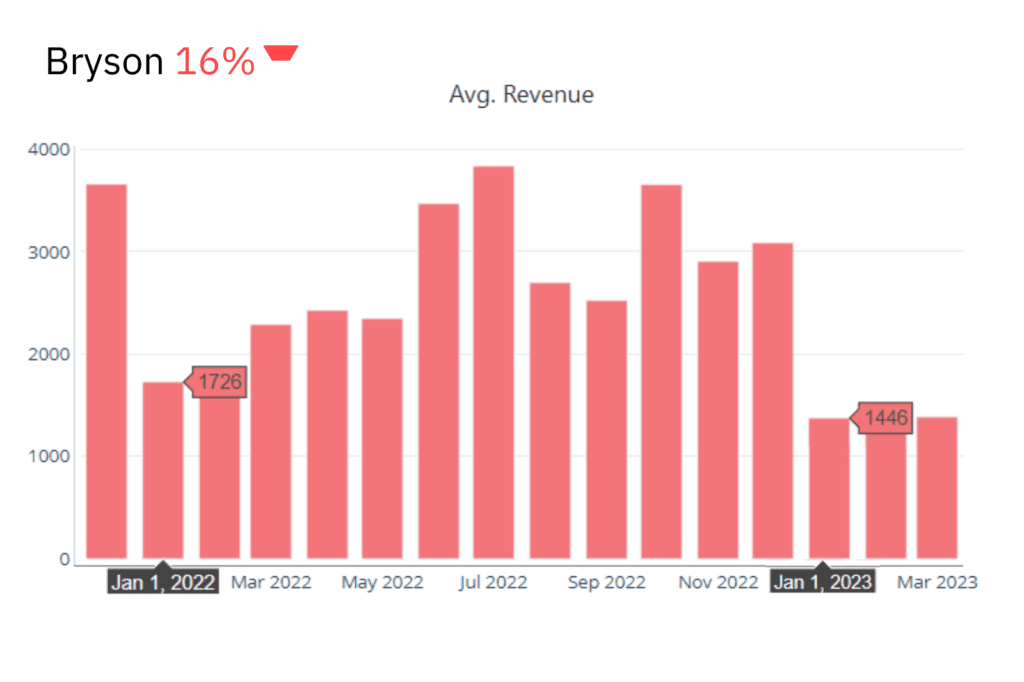

What should vacation rental hosts do during a demand downturn?
We recommend doing the following to ensure you continue getting bookings:
Reach out to your existing lead funnel
As a property owner, retaining existing customers and leads who have previously enquired about your property is a valuable source of revenue. These warm prospects have higher chances of conversion, making it crucial to maintain contact with them.
You can offer “returning customer discounts” to previous guests during low-season periods and incentivize referrals. Personalized targeted ads can also help attract prospects who are yet to book. Implement these strategies to generate leads effectively and maintain a loyal customer base for your property.
Update your listing
To attract guests during low season on vacation rental websites like Vrbo, Airbnb, and Booking.com, update your listing and follow hosting tips. Keep the availability calendar up-to-date, use a cover photo that showcases low-season appeal, and feature special offers and local activities in the listing. Set reasonable low-season and shoulder rates and highlight unique selling points and amenities with bullet points.
Use a descriptive title that mentions key features like location, amenities, and views. Optimize your listing by adding at least 23-28 pictures taken with a wide-angle lens and arranging them in a walkthrough fashion.
Establish a brand presence on Airbnb, Vrbo, and other OTAs by adding a watermark with your logo on photos and mentioning reviews in captions. Avoid giving directions and focus on neighbourhood descriptions by mentioning nearby places and landmarks.
Adjust vacation rental policies for low seasons
During the low season, guests may prioritize flexibility and personalized offers. Crafting policies and offers that appeal to unique needs and maximize revenue is wise.
Offering free cancellations until closer to arrival is a simple way to attract these travellers. You can also set up multiple vacation rental cancellation policies for the same listing, allowing guests to pay more or less depending on their needs. As the travel date approaches, people will likely value price over flexibility. To reduce the risk of cancellations, take a personal approach by sending a “thank you” email expressing your appreciation.
Try to be as flexible as possible when considering your vacation rental extra-person policies, pet policies, and more. You don’t need to accept all bookings that come your way just because the market needs to do better. You must consider your bottom line and analyze risks before accepting or turning down a request.
Track OTA ranking
Most property managers quickly adapt their pricing to place their vacation rental property at a competitive advantage whenever there is a change in the market. You might have the best possible dynamic pricing strategy, but if you don’t appear on the first page when a guest searches for your property type, then it is not useful. Therefore, you must keep track of your ranking in Airbnb, Vrbo, and other OTAs.
Various factors affect these rankings:
- Minimum length of stay restrictions
- The discounts that you are offering
- Your cancellation policy and the number of cancellations your property has gotten
- Your extra guest policy
- The amenities you provide
- Your property description
- Airbnb Superhost or Airbnb Plus status
Take time to research your ideal guest and craft your listing for them. Try reproducing a description that reflects the interests of your potential guests and will, therefore, help increase bookings.
Invest in vacation rental marketing
Marketing your vacation rental property during low-demand periods is crucial for generating bookings and revenue. Consistent marketing helps maintain a robust online presence, making your property top of mind for potential guests. Share your listing on relevant social media platforms & communities. Run social media ads, collaborate with vacation rental influencers, and use automated emails to contact previous guests. Offer exclusive discounts and promotions to incentivize repeat business. By effectively marketing your property, you increase your chances of attracting travellers during slower periods and maintaining bookings throughout the year.
Alter your Dynamic Pricing pricing strategy
Increase revenue by being flexible on check-in/check-out timings, minimum length of stays, and offering mid/long-term booking discounts. Study competitor and hotel prices, use pricing tools such as PriceLabs and consider past guest behaviour when setting prices. At the same time, do not panic price. If the market occupancy is 30, and the average ADR is $40, changing your ADR to $30 will not create demand. Discount your property with seasonality, demand, and your property performance in mind.
You can do this and more with PriceLabs Dynamic Pricing, a feature that automatically adjusts prices based on occupancy, demand, and seasonality:
a) Look at your listing health
Performance Metrics or the Listing’s Health provides property managers valuable insights into their listing’s performance. Accessible on Review Prices and Multi-Calendar pages, it offers automatic 7, 30, and 60-day metrics. You can select different occupancy days on the Review Prices page to customize the future booking window by clicking the three dots in the top right corner. This feature lets property managers make informed adjustments to increase their booking rates.


b) Know your vacation rental market
It is essential to understand the pricing strategies of your local competitors when pricing your vacation rental properties competitively. PriceLabs Market Dashboard provides a listing map showing active properties in your area with their average rates and the number of bedrooms. You can also check your competitors’ pricing and availability using the Neighbourhood data and competitor calendar. The Length of Stay by Stay Date graph shows the typical booking duration and average nightly rate for any given date. The future prices graph helps you understand how your prices compare to the market, and the amenities feature shows the most preferred features in your area. Additionally, PriceLabs Portfolio Analytics provides an in-depth analysis of your vacation rental portfolio’s performance against the market concerning key performance indicators.
Take a look at our comprehensive guides on Market Dashboard and Portfolio Analytics to know more:
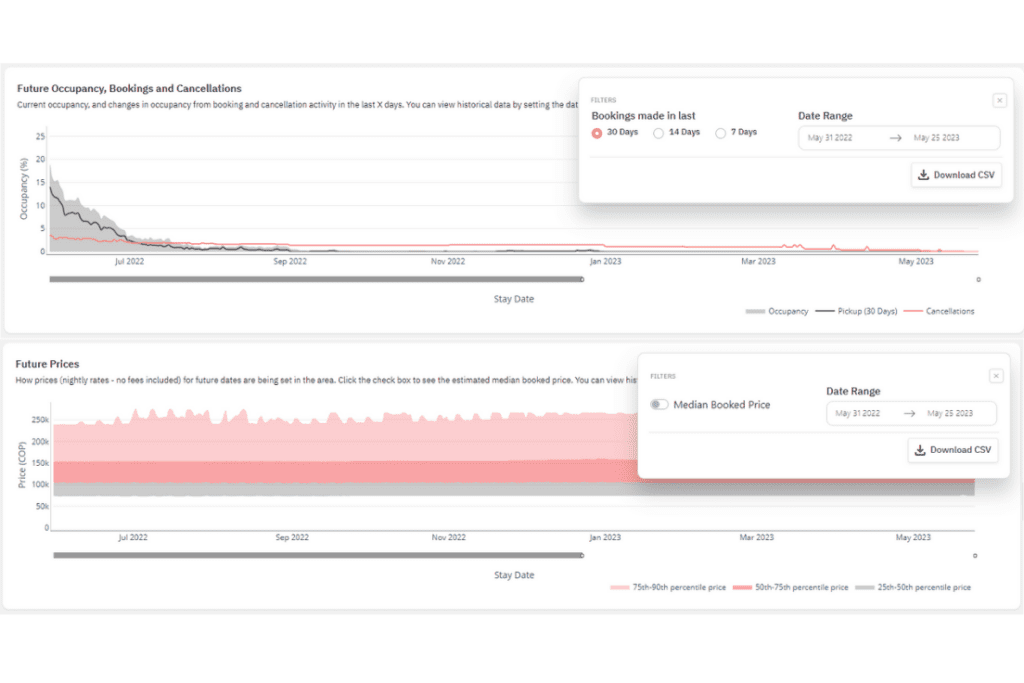

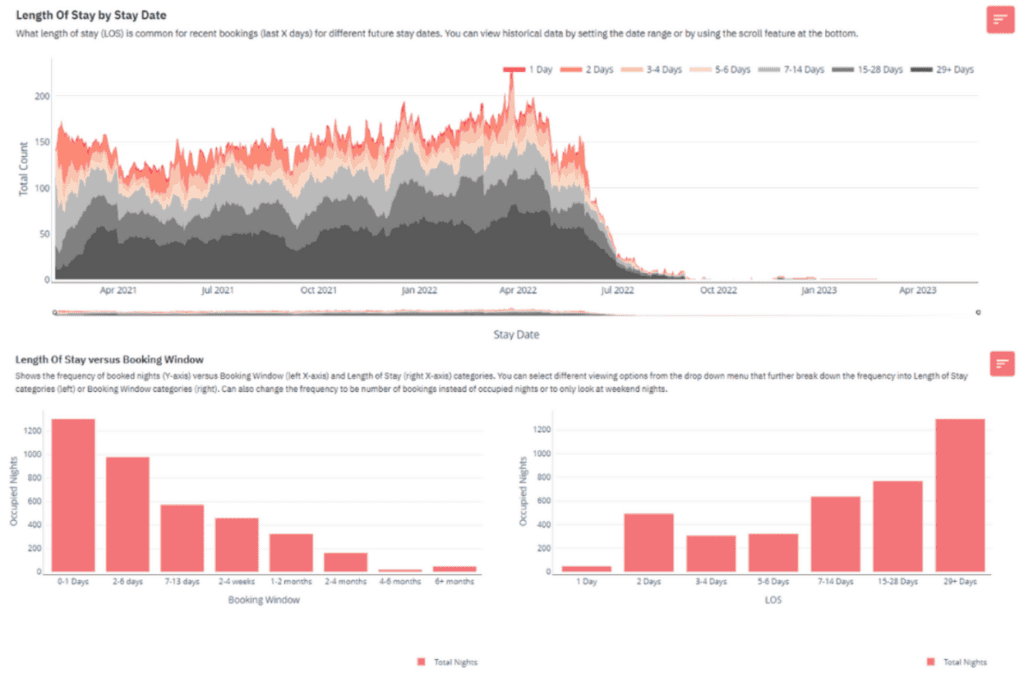

c) Stay restrictions and customizations
According to internal data, utilizing stay restrictions properly can lead to a 5-10% revenue lift. You can set up cascading minimum length of stay settings that target various aspects of your pricing strategy. Remember that this is an advanced feature; if you are apprehensive about the settings, you can utilize our Minimum Stay Recommendation Engine. You can accept the suggested minimum length of stay restrictions or customize them. For example, if we’re recommending a 1-night minimum length of stay for last-minute bookings, but you do not want a 1-night minimum, then go ahead and change all 1-nights to 2-nights.
Customizations you need to focus on:
- Orphan day prices
- Last-minute bookings
- Occupancy-based adjustments
- Demand factor aggressiveness
- Far-out bookings


d) Update your Base Price and your Minimum Price
Whenever there is a demand downturn, a low base price is recommended. We recommend updating your base price every week when you get started, but once a monthly update should be good enough as you go forward and learn the software better.
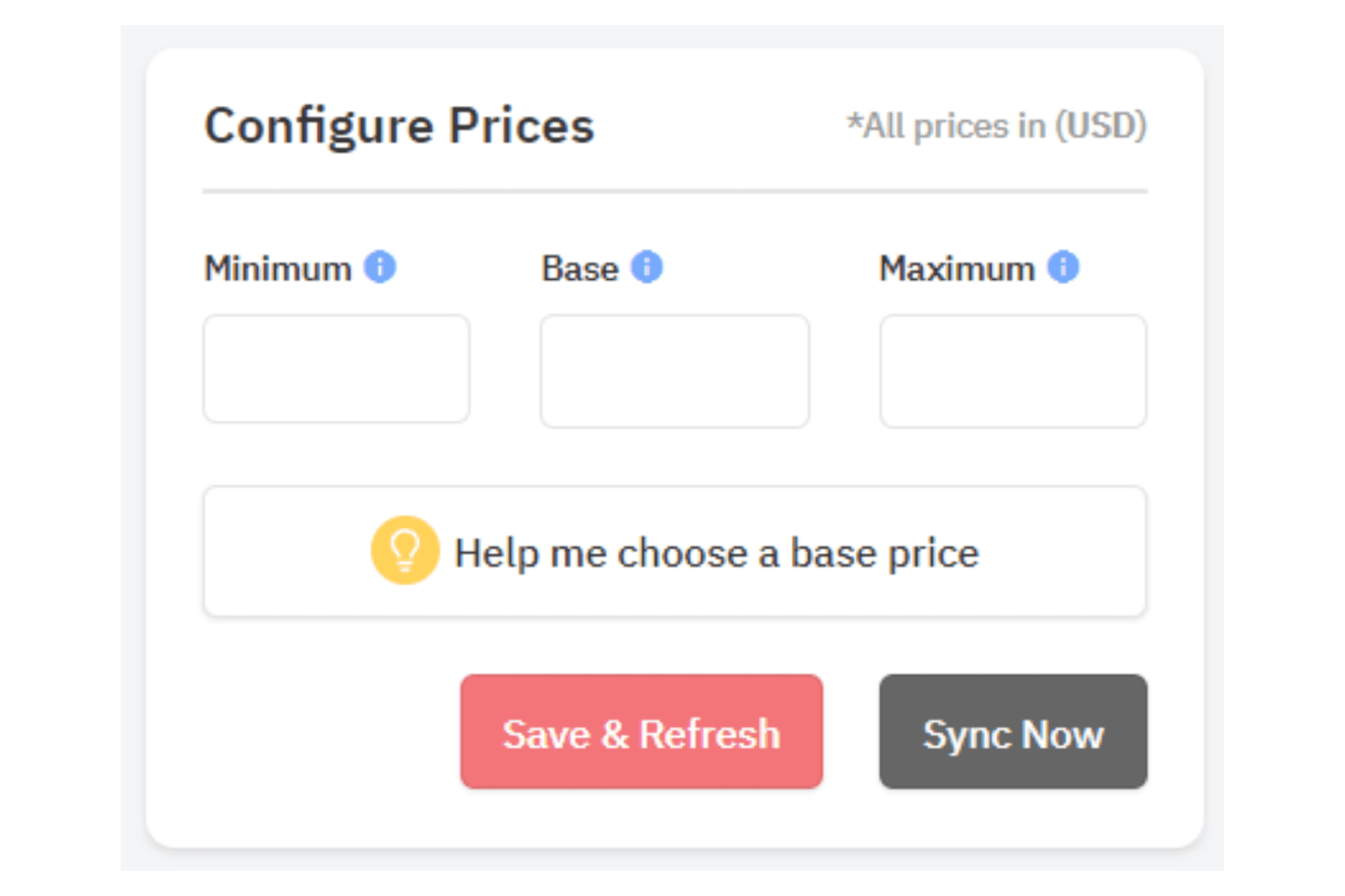

We do not recommend a minimum price because the least rate you would be comfortable with comes with many overheads. Therefore, it doesn’t show up anywhere in our pricing recommendations.


e) Track vacation rental KPIs consistently
You can track these metrics on Portfolio Analytics.


We are still determining what kind of turn the market will take now. However, it is important to remember that we might just be returning to a ‘normal’ market. But it is wise to be prepared for anything thrown at us. The world is at an uncertain point again economically. Countries have started rationing food, and other countries are gatekeeping supplies in fear of a shortage. So follow the steps mentioned above to tackle the demand change in the market.
Conclusion
Increase revenue for your vacation rental by offering flexible check-in/check-out times, minimum length of stays, and mid/long-term booking discounts while setting prices based on competitor and hotel rates, past guest behaviour, and market demand without panic pricing. Use PriceLabs Dynamic Pricing to stay ahead of the competition with data-driven pricing solutions that automatically adjust prices based on occupancy, demand, and seasonality.






